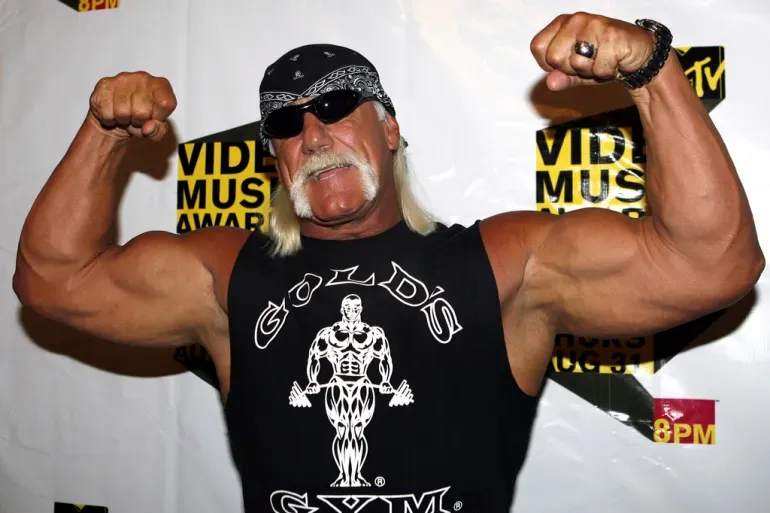Hulk Hogan’s Final Bout: the darkside of wrestling

The world was stunned on July 24, 2025, when Terry Gene Bollea, known to millions as Hulk Hogan, collapsed at his Clearwater home during physical therapy. Paramedics rushed him to Morton Plant Hospital, but he was pronounced dead shortly thereafter. The medical examiner later confirmed the cause of death: heart attack.
Though Hogan’s flamboyant persona and theatrical in-ring battles felt larger than life, his death, shrouded in health struggles hidden from the spotlight, was undeniably grounded in sobering medical realities. Behind the bravado lay battles with chronic lymphocytic leukemia (CLL) and atrial fibrillation, a heart-rhythm disorder, both of which only came to light posthumously. In the months leading up to his death, Hogan had endured a grueling four-level anterior cervical discectomy and fusion, a complex spinal surgery that led to a sharp decline in his mobility and health.
For fans, Hogan was an icon, the face of Hulkamania, a six-time WWE champion, and the key figure in wrestling’s 1980s explosion into mainstream pop culture. Yet his death reveals the darker undercurrent pulsating beneath wrestling’s spectacle, a sport meticulously staged, yet dangerously physical, and raises serious questions about the toll it takes on its performers.
Built on Story, Sustained by Risk
Professional wrestling is uniquely constructed; matches follow scripted storylines, yet the athleticism is real and the injuries are not fiction. Fighters launch themselves off ropes, endure body slams, and take brutal impacts on unforgiving mat surfaces. Over decades, wrestlers like Hogan repeatedly subjected their bodies to trauma in the name of entertainment. Hogan himself admitted he had undergone “like 25 surgeries in the last ten years, 10 of them were back surgeries,” along with multiple hip and shoulder replacements. Each operation testifies to the physical price wrestlers pay; often in silence.
What sets wrestling apart from conventional sports is both the expectation of perpetual performance and the glamorization of toughness. There’s pressure to “push through,” even when pain is chronic, because the show must go on.
Behind Closed Doors: Secrets and Sacrifices
Hogan’s recent health battle was not widely known. His widow, Sky Daily, described the loss as sudden and unimaginable, writing that she “had so much faith in his strength” Close friends, including longtime collaborator Jimmy Hart recalled how Hogan seemed upbeat one day and gravely ill the next.
The secrecy surrounding his diagnosis sparked questions within the family and among fans. His daughter Brooke Hogan, who had been estranged and did not attend his funeral, publicly called aspects of his death ‘weird’ and offered to pay for an independent autopsy. While no evidence of foul play has surfaced, the family’s concerns highlight the opacity often surrounding athletes’ health crises.
Where Fiction Meets Fragility
Hogan’s passing illustrates how wrestling’s mythic façade often obscures fundamental human fragility. Matches are stagecraft, but the bodies under the costumes are real and finite. His death from heart failure, compounded by cancer and surgical complications, echoes similar tragedies in the industry. Wrestlers frequently face unmanaged pain, chronic health conditions, and long-term consequences, often without adequate post-career support.
The scripted drama, the flamboyant personalities, the spectacle; it all comes at a cost. It’s a cost that only becomes tragically visible when a legend like Hulk Hogan, who gave so much to the craft, can no longer bear the physical burden.
A Legacy Reassessed
As tributes pour in from ex-wife Linda Hogan’s heartfelt birthday remembrance to wrestling contemporaries remembering him as a cultural force, Hogan’s death may spark a deeper conversation about athlete welfare in performance-based sports. WWE issued a statement mourning the loss of ‘one of pop culture’s most recognizable figures’, emphasizing his role in bringing wrestling to the global stageBut the broader legacy may now also encompass what the industry must do better: prioritize health, transparency, and long-term care for those who turn physicality into storytelling.
In the end, Hulk Hogan’s final chapter reminds us: behind the glitz of sports entertainment, there are human hearts, sometimes broken by the very spectacle they helped build.
Fatima Hassan is a freelance journalist and the co-founder & Multimedia Editor of Echoes Media, dedicated to crafting impactful stories that resonate with diverse audiences. A journalism graduate of Northwestern University, Fatima combines analytical rigor with creative storytelling to explore complex issues and amplify unheard voices.

Member discussion